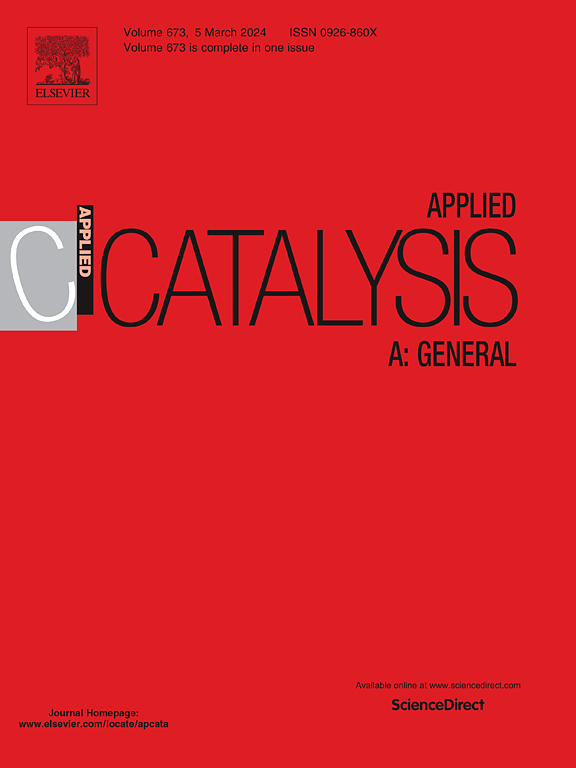s -空位ZnCdS与NiMnS结合的高效光催化析氢表面工程调制与优化
IF 4.8
2区 化学
Q2 CHEMISTRY, PHYSICAL
引用次数: 0
摘要
界面处的内置电场通过提高光诱导载流子的分离效率,对光催化产氢起着至关重要的作用。本研究将s -空位引入到ZnCdS中,并将类金属NiMnS与含s -空位的ZnCdS结合形成欧姆结,用于光催化析氢。优化后的Vs-ZnCdS/NiMnS光催化剂产氢速率为1964.8µmol g−1 h−1,比单独的Vs-ZnCdS提高了2.58倍。研究结果表明,NiMnS和Vs-ZnCdS之间显著的费米能级偏移在异质界面上产生了一个强大的内置电场。这种界面电场促进了电子-空穴对的有效解离,从而提高了载流子的迁移率。此外,s -空位的引入提供了额外的电子传递通道,进一步加速了界面电荷的迁移。因此,NiMnS中的高还原电子被保留并用于制氢,从而显着提高了光催化活性。该研究提供了理论见解和实验验证的方法,通过合理的界面调节来提高H2的演化性能。本文章由计算机程序翻译,如有差异,请以英文原文为准。
Surface engineering modulation and optimization of S-vacancy ZnCdS combined with NiMnS for efficient photocatalytic hydrogen evolution
The built-in electric field at the interface plays a crucial role in enhancing photocatalytic hydrogen production by improving the separation efficiency of photoinduced charge carriers. In this study, S-vacancies were introduced into ZnCdS, and metal-like NiMnS was combined with ZnCdS containing S-vacancies to form ohmic junctions for photocatalytic hydrogen evolution. The optimized Vs-ZnCdS/NiMnS photocatalyst achieves a hydrogen production rate of 1964.8 µmol g−1 h−1, representing a 2.58 times enhancement over Vs-ZnCdS alone. A thorough examination has been undertaken, the results of which indicate that the significant Fermi level offset between NiMnS and Vs-ZnCdS gives rise to a robust built-in electric field across the heterointerface. This interfacial electric field facilitates efficient dissociation of electron-hole pairs, consequently improving charge carrier mobility. Additionally, the introduction of S-vacancies provides additional electron transport channels, further accelerating interfacial charge migration. Consequently, the highly reducing electrons in NiMnS are retained and utilised for the hydrogen generation, resulting in significantly improved photocatalytic activity. This investigation delivers theoretical insights and experimentally validated methodologies for boosting H2 evolution performance through rational interface regulation.
求助全文
通过发布文献求助,成功后即可免费获取论文全文。
去求助
来源期刊

Applied Catalysis A: General
化学-环境科学
CiteScore
9.00
自引率
5.50%
发文量
415
审稿时长
24 days
期刊介绍:
Applied Catalysis A: General publishes original papers on all aspects of catalysis of basic and practical interest to chemical scientists in both industrial and academic fields, with an emphasis onnew understanding of catalysts and catalytic reactions, new catalytic materials, new techniques, and new processes, especially those that have potential practical implications.
Papers that report results of a thorough study or optimization of systems or processes that are well understood, widely studied, or minor variations of known ones are discouraged. Authors should include statements in a separate section "Justification for Publication" of how the manuscript fits the scope of the journal in the cover letter to the editors. Submissions without such justification will be rejected without review.
 求助内容:
求助内容: 应助结果提醒方式:
应助结果提醒方式:


